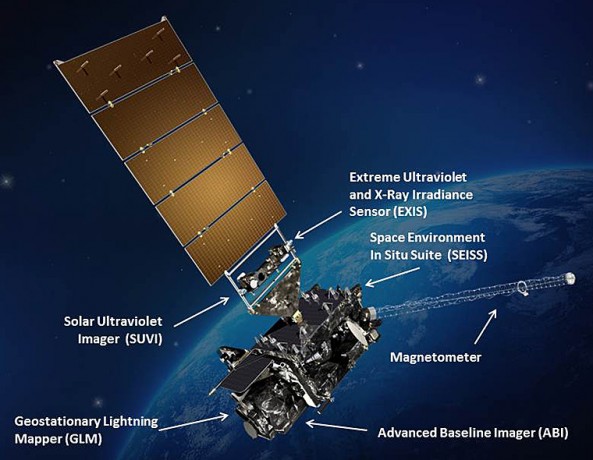
A satellite scheduled for launch Thursday will aid weather forecasting in the Western U.S., including Alaska.
According to NASA, the National Oceanic and Atmospheric Administration GOES, or Geostationary Operational Environmental Satellite, is the second new unit to be deployed into orbit over the equator. The first of the new minivan size satellites, positioned to view the eastern North America, went up in 2016, replacing an older model. NASA says the satellites send images and other data to earth five times faster than predecessor versions.
”It fires a picture every one minute, which is incredible to what we’ve seen before,” Fairbanks National Weather Service meteorologist Becca Mazur said.
Mazur says the higher transmission speed helps forecasters do their job.
”You can actually use the satellite imagery now,” Mazur said. “You can use it for forecast at the moment instead of having to wait 15-plus minutes for the picture to show up.”
The new satellites also offer four times better image resolution, finer detail Mazur says is key to observation and forecasting.
“It’s a significant improvement for observing clouds and other weather patterns,” Mazur said.
Lisa Wirth is interim director of the University of Alaska Fairbanks Geographic Information Network of Alaska or “GINA”, which has NASA contracts to download and process data from similarly equipped polar orbiting satellites.
Wirth points to the technology’s value in quickly tracking weather, as well as a range of other environmental conditions.
“To discern between snow, ice and cloud cover,” Wirth listed. ”Sea ice, wildfire, volcanic emissions.”
Near-real time tracking of conditions is important to public safety, capability Wirth credits to a general growth in space based earth observation.
”The number of satellites that are flying in space are increasing, and so that’s just increasing our temporal coverage,” Wirth said. “Which means we can get data faster, more often over the same spot on the Earth and, of course, the technology is also increasing, so we’re getting better data in itself.”
A rocket carrying the new GOES satellite is scheduled for liftoff from Cape Canaveral, Florida at 1:04 p.m. Alaska Time Thursday.
Dan Bross is a reporter at KUAC in Fairbanks.




